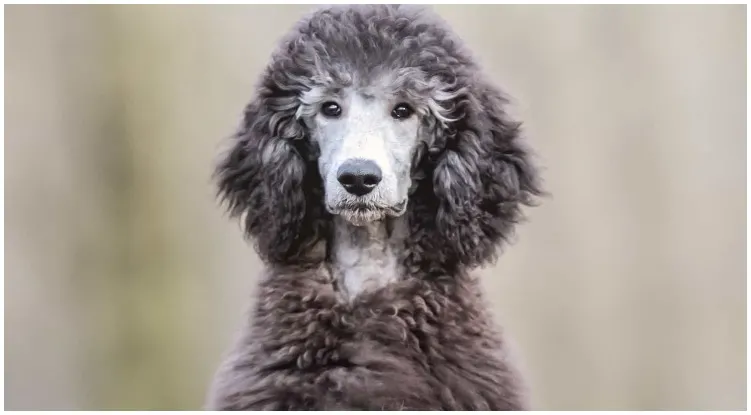Have you heard about the Phantom Poodle? It’s nothing scary or Halloween-ish, instead it just refers to a coat pattern. It refers to a difference in coloring from their primary coat color and other secondary colors. Compared to the other breeds, Phantom Poodles are similar to Parti Poodles since they both have two different colors incorporated into their coats. Undoubtedly, there is diversity even among Phantom Poodles since they often have a base color that brings in a secondary color that highlights the markings.
Colors of Phantom Poodles
We made a short introduction regarding their colors in the beginning of this article. If you didn’t know, Phantom Poodles are often characterized by the color of their primary background color. This is the color that is most visible and dominant in their coat. Also, these base colors include both light and dark options. The following example shows that you can have a darker-colored Phantom Poodle with a base color of black or red mixed with brown. However, you can also have a lighter-colored Phantom Poodle with base colors such as cream, apricot, or white mixed with silver.
In the other hand, the secondary colors and markings are where the absolute uniqueness and fun come in with the Phantom Poodle’s appearance. Keep in mind that the base coat of the Phantom Poodle is amplified by specific colored markings that cover the Poodle in particular areas. However, these secondary colors also include light and dark options, with apricot, cream, gray, and brow mixed with silver. All that being said with all these different colors, some primary base colors only go with one secondary color.
Markings of a Phantom Poodle
The Phantom Poodle is also known for their markings. So, these markings occur on specific parts of the Poodle’s coat. These markings are also called “Dobie Markings,” which refers to the common patterns found on the Doberman breed. We cannot know the right location of the secondary colored markings since they include different areas around their body. But, they include places such as just above the eye and on the sides of the cheeks. Besides this, they will also have markings underneath their tail and on their legs, particularly toward their paws. Finally, all Phantom Poodles have markings that are right across their chest, further bringing out that secondary color in a bold way. So, we can assume that you learned where their markings are.
Similarities To Other Poodles
As with the other breeds, they all have some similarities. So, keep in mind that while the color patterns of Phantom Poodles may differ from the American Kennel Club standard, they can still have coats that are very wavy and curly. Also, they can have long or short coats, depending on your grooming preferences. Also, one thing to keep in mind is that their coat color does not affect their temperament or personality either. Besides everything said, all Poodles, regardless of color or markings, are known for being highly intelligent and fun-loving. Be sure that they bring a lot of energy and loyalty to all their relationships. In the end, there is no difference in particular health concerns compared to regular Poodles.
Where Did The Phantom Poodle Come From
For the end, we’ll provide a short brief of the Phantom Poodles history. As you may know that the Phantom Poodle is highly popular now, it was not always that way. What was the case? These phantom markings resulted from intentional breeding practices and being mindful of what kinds of dogs people wanted to have around. So, the practice of breeding started with a genetic trait that was not all that well emphasized until recently. What makes the difference? While Poodles had always been known for their exquisite and elegant coats, the Phantom and other unique types of markings did not take off until later. Also, keep in mind that the coloring of the Phantom Poodle is not recognized as a standard by the American Kennel Club. Therefore, they are not allowed to be shown in competition.
So, do you want a unique dog as Phantom Poodle? Everything said above fits into your perfect dog description? Or maybe you are in love with their markings? Then, you should probably get one! And remember, always adopt!

